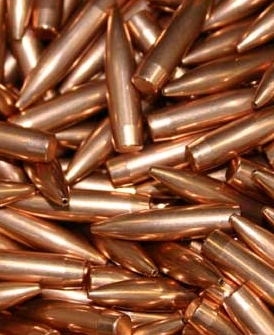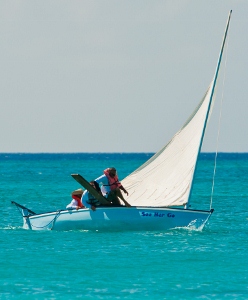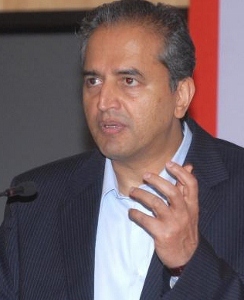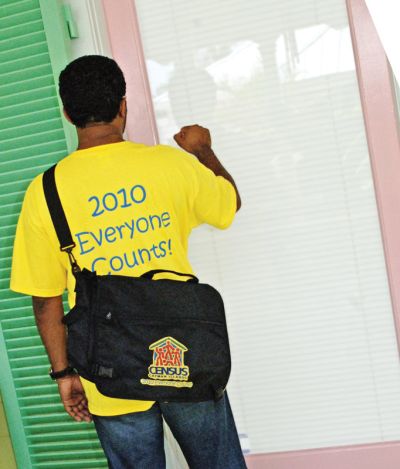Archive for April 5th, 2012

Cops left ammo at range
 (CNS): The RCIPS has admitted that officers left rounds of ammunition behind at the Cayman Islands Gun Club shooting range last week after a training session at the range. As a result the police are now conducting an internal investigation into how the rounds of ammunition were mistakenly left at the club and apparently forgotten about. Responding to enquiries from CNS about the police rifle .223 ammunition that was left behind at the club, the police confirmed that the bullets had been found and recovered by a member of the public, who immediately brought the ammunition to the RCIPS on Saturday 31 March.
(CNS): The RCIPS has admitted that officers left rounds of ammunition behind at the Cayman Islands Gun Club shooting range last week after a training session at the range. As a result the police are now conducting an internal investigation into how the rounds of ammunition were mistakenly left at the club and apparently forgotten about. Responding to enquiries from CNS about the police rifle .223 ammunition that was left behind at the club, the police confirmed that the bullets had been found and recovered by a member of the public, who immediately brought the ammunition to the RCIPS on Saturday 31 March.
“The RCIPS had been conducting routine training at the CIGC the previous day Friday 30th March," a police spokesperson revealed. “It has now been established that the recovered rounds do in fact belong to the Royal Cayman Islands Police Service.
“How these rounds were not accounted for and left behind at the range is currently being investigated,” the officer added.

Traditional vessels to set sail in catboat race
 (CNS): The Cayman Catboat Club will be hosting its annual sailing competition this holiday weekend when the country’s traditional sailing vessels will take to the ocean. The Catboat Club Easter Regatta is scheduled for Easter Monday, 9 April 2012, at Tiki Beach from 11am to 3pm. The regatta is forms part of the Club’s championship series and teams will be racing towards a place in the final event – the Camana Bay National Catboat Championship, held on Remembrance Day in November. The Championship Series works on the accumulation of points from races throughout the year, and the Easter Regatta is the last qualifying event in the series.
(CNS): The Cayman Catboat Club will be hosting its annual sailing competition this holiday weekend when the country’s traditional sailing vessels will take to the ocean. The Catboat Club Easter Regatta is scheduled for Easter Monday, 9 April 2012, at Tiki Beach from 11am to 3pm. The regatta is forms part of the Club’s championship series and teams will be racing towards a place in the final event – the Camana Bay National Catboat Championship, held on Remembrance Day in November. The Championship Series works on the accumulation of points from races throughout the year, and the Easter Regatta is the last qualifying event in the series.
“It’s one of the most exciting races of the year,” said Jerris Miller, president of the Cayman Catboat Club. “We hope to have many boats competing, with teams of two or three people on each boat.”
Along with the races, spectators can enjoy traditional Cayman crafts and games on offer from Cayman Traditional Arts, such as conch shell blowing, Soldier Crab racing and Wari. Host Tiki Beach will also be offering a special Easter Menu, featuring traditional Caymanian dishes.
Miller said that the annual race is another step towards bringing the history and heritage of the catboat alive again. “We continue to grow each year and events like the Easter Regatta not only help to raise the profile of the Catboat Club, but also bring the tradition of catboat racing back to the Islands,” he added.
The catboat is an integral part of the maritime history of the Cayman Islands. The handcrafted wooden boats were vital to survival in the early days of Cayman – before modern transportation arrived. These venerable vessels were used for turtling and fishing as well as a means of transportation.
“It was used for absolutely everything in Cayman,” says Kem Jackson, vice-president of the Catboat Club. “It was a lifeline.”
Catboats were introduced in Cayman in the early 1900s. In their heyday, they were a common sight in the George Town Harbour and were used to unload cargo from ships and to distribute supplies and packages to the districts. As times progressed, however, their numbers dwindled.
Today, they are enjoying a revival, thanks to the efforts of members of the Cayman Catboat Club, as well as sponsors, such as the Dart Foundation.
Last year, Dart committed $175,000 to the Cayman Catboat Club over the next three years. Sponsorship funds are being used toward the restoration of the Whittaker Cat, a 24-foot catboat that was built in 1962. Originally owned by Linton Whittaker, it was among the largest catboats in the Cayman Islands.
Jackson has restored the vessel to its former glory, and it will be among the vessels taking part in the Easter Race. Funds are also being used for improvements and restoration to the Catboat Club’s harbour front clubhouse, located next to the Lobster Pot restaurant in Whitehall Bay. Other projects include on-going educational programmes and the Cayman Catboat Club Championship Series.
“They’re wonderfulboats,” says Jackson, who recalls sailing in the vessel as a young boy. “The catboat is part of our history and our culture and it’s great that traditional events such as the Easter Regatta are still going strong.”

Experts predict quiet Atlantic hurricane season
 (CNS): Leading hurricane forecasters from Colorado State University are predicting a quieter season for 2012. The team founded by William Gray are calling for 10 tropical storms, with only four becoming hurricanes and only two of those major hurricanes with winds of at least 111 miles per hour. The team said Wednesday that the outlook for a milder Atlantic season was based on two main factors. Hurricanes thrive on warm water and the tropical Atlantic has cooled this year and the likelihood that an El Nino effect will develop this summer. The forecasters said that the chance of one major hurricane making landfall along the US coastline this coming season is 42 per cent, and 34 per cent for the Caribbean.
(CNS): Leading hurricane forecasters from Colorado State University are predicting a quieter season for 2012. The team founded by William Gray are calling for 10 tropical storms, with only four becoming hurricanes and only two of those major hurricanes with winds of at least 111 miles per hour. The team said Wednesday that the outlook for a milder Atlantic season was based on two main factors. Hurricanes thrive on warm water and the tropical Atlantic has cooled this year and the likelihood that an El Nino effect will develop this summer. The forecasters said that the chance of one major hurricane making landfall along the US coastline this coming season is 42 per cent, and 34 per cent for the Caribbean.
Meteorologists Philip Klotzbach and Gray said there was “a below-average probability for major hurricanes making landfall” in the region.
“We have witnessed cooling of the tropical Atlantic during this past winter, and there is a fairly high likelihood that an El Nino event will develop this summer,” Klotzbach said in a release. “Typically, El Nino is associated with stronger vertical shear across the tropical Atlantic, creating conditions less conducive for storm formation.”
Despite that however he reminded all those living in the Caribbean, especially along coastlines, to exercise all measure of caution throughout the season.” Still, all vulnerable coastal residents should make the same hurricane preparations every year, regardless of how active or inactive the seasonal forecast is. It takes only one landfall event near you to make this an active season.”
Forecasters have also made some small changes to the Saffir-Simpson scale of hurricane intensity. The scale divides hurricanes into five categories based on wind speed measured in 5-knot increments. For public advisories, knots are converted to miles per hour and kilometres per hour, rounded to the nearest 5 mph or 5kph. Experts said this created problems when storms neared the threshold dividing the categories as storms could fall into Category 4 when measured by knots and Category 3 when measured in miles or kilometres per hour.
To fix that changes have been made to categories 3 to 5 which will takes effect on 15 May. The new scale is:
Category 1: 74-95 mph (64-82 knots, 119-153 kph)
Category 2: 96-110 mph (83-95 knots, 154-177 kph)
Category 3: 111-129 mph (96-112 knots, 178-208 kph)
Category 4: 130-156 mph (113-136 knots, 209-251 kph)
Category 5: 157 mph or higher (137 knots or higher, 252 kph or higher)
The Atlantic Hurricane season starts on 1 June and lasts until 30 November.

Broken water main in GT slows morning traffic
(CNS): The second broken water pipe in a week in the capital is disrupting traffic this morning Thursday, along Shedden Road in George Town. The Water Authority said the burst main is located near the junction of Dr Roy’s Drive where repairs are under way and the pipe should be completed within the next hour. Motoristsare asked to drive with caution and obey all traffic signs. The Water Authority said that it “appreciates the patience and understanding of the motoring public as they continue to provide services to all of their valued customers and apologizes for any inconvenience.”

Manderson takes up official role in legislature
 (CNS): Although the Legislative Assembly session on Wednesday morning was short, there was time for Deputy Governor Franz Manderson to take his oath of allegiance as an ex-officio member of the country’s parliament. Speaker Mary Lawrence welcomed Manderson on behalf of all the members at the start of the fifth meeting of the 2011/12 session. The deputy governor has responsibility for internal and external affairs as well as the civil service, and takes the seat of his predecessor, the recently retired Donovan Ebanks. Although Manderson can take part in debates and bring bills, ex-officio members cannot vote on laws or motions.
(CNS): Although the Legislative Assembly session on Wednesday morning was short, there was time for Deputy Governor Franz Manderson to take his oath of allegiance as an ex-officio member of the country’s parliament. Speaker Mary Lawrence welcomed Manderson on behalf of all the members at the start of the fifth meeting of the 2011/12 session. The deputy governor has responsibility for internal and external affairs as well as the civil service, and takes the seat of his predecessor, the recently retired Donovan Ebanks. Although Manderson can take part in debates and bring bills, ex-officio members cannot vote on laws or motions.

Shetty signs with US hospital
 (CNS): Dr Devi Shetty has entered into partnership with one of the largest non-profit hospital chains in the United States in order to build and operate his proposed Cayman Islands healthcare city in East End. The renowned Indian heart surgeon who has proposed creating a facility based on his now famous low cost model has signed what was described as ‘document of public commitment’ with Ascension Healthcare Alliance. This deal will see the Ascension group handle purchasing, facilities management and biomedical engineering services at the new hospital, while Dr Shetty’s group will provide technical input and run the facility.
(CNS): Dr Devi Shetty has entered into partnership with one of the largest non-profit hospital chains in the United States in order to build and operate his proposed Cayman Islands healthcare city in East End. The renowned Indian heart surgeon who has proposed creating a facility based on his now famous low cost model has signed what was described as ‘document of public commitment’ with Ascension Healthcare Alliance. This deal will see the Ascension group handle purchasing, facilities management and biomedical engineering services at the new hospital, while Dr Shetty’s group will provide technical input and run the facility.
The agreement between the two health care providers was signed at the Ritz-Carlton on Wednesday at a special ceremony with a full complement of government delegates, as well as Dr Shetty’s team and representatives from the US based hospital.
Dr Tersigni from Ascension Health revealed that it has been in talks with Dr Shetty for two years to explore ways of using his model to cut health care costs in the US. The partnership would not only lead to the provision of state-of-the-art healthcare facilities for Cayman, he said, but would also act as a pilot test case for lower cost health care provisions and determine if Shetty’s model could reduce health care costs in America.
Owing to the size of Ascension, which manages more than 17,000 beds across 1,400 hospitals, and Dr Shetty’s Narayana group, which has around 5,600 beds, the doctor said the partnership would increase the Cayman hospital’s purchasing and negotiating power to keep costs down. The Indian surgeon also said that the deal meant that the Cayman hospital would not have to advertise for a single medical job as there was enough manpower across the two groups to staff the new facility, even though there is a significant worldwide shortage of trained medical personnel.
However, he emphasised that there would be a push to begin training local people so that they could join what would eventually be a significant workforce as soon as was possible.
Dr Shetty revealed that he still had plans to build a “healthcare city” here of some 2,000 beds but the first phase, which is scheduled to break-ground in August and on target to open early next year, will be 140 beds focusing on cardiac and cancer treatments.
The goal is to offer local patients a way to receive tertiary treatment here in Cayman, which should result in a significant saving for the public purse, but also to create a medical tourism centre of excellence catering to sick people from the Caribbean and the United States.
Speaking about the success of his model, Dr Shetty said the doctors at his hospital all receive a text message at noon everyday showing the previous day’s profit and loss, which helps them to manage costs, and he said the same principle would be applied at his health city in Cayman.
Ambitious for his new facility and his first venture in the west, Shetty said he hoped that in a few years’ time when people thought of the Cayman Islands they would think of a medical centre of excellence.

Full census finally revealed
 (CNS): The full National Census report of the Cayman Islands was finally laid on the table of the Legislative Assembly on Wednesday some four months after the document was completed by the Economics and Statistics office making it an official public document. The document reveals information on Cayman’s demography, disability and illness, education, marital status, fertility, employment, household and housing characteristics. This report shows that the growth in population since the 1999 census is down to a growth not in foreign residents but due to an increase in the Caymanian population.
(CNS): The full National Census report of the Cayman Islands was finally laid on the table of the Legislative Assembly on Wednesday some four months after the document was completed by the Economics and Statistics office making it an official public document. The document reveals information on Cayman’s demography, disability and illness, education, marital status, fertility, employment, household and housing characteristics. This report shows that the growth in population since the 1999 census is down to a growth not in foreign residents but due to an increase in the Caymanian population.
There 52% more Caymanians compared to the last census while foreigners increased by just over 40% on the number of ex-pats in 1999. There were 10,488 more Caymanians but only 5,604 more non-Caymanians. Despite the unemployment rate among Caymanians running at 9.8% the census found that the workforce is made up of a greater number of non-Caymanians as over 53% of the workforce are foreign nationals.
Among the employed Caymanians, 51.4 percent have earnings below the GDP per capita bracket ($38,400-$57,599) while 21.5 percent are within this bracket, and 23.6 percent are above this bracket. Among the employed non-Caymanians, 69.4 percent earn below the GDP per capita bracket, 11.8 percent are within this bracket while 15.9 percent earn higher than this bracket.
There are now 22,760 households on the islands an increase of 7853 from 1999 with 51% of them being in George Town but the rate of increase was highest in Bodden Town where households have grown over the last decade at a rate of more than 95%. The average household size has decreased slightly from 1999 to 2.4 from 2.6. Almost one in three homes are single people households which reflects the findings of the census that more than a third of the country’s population is not in a marriage or permanent relationship with 43.7% of women not in any kind of union.
46.3% of households are rented furnished accommodation only less and a similar number live in their own homes but around two thirds of those owners have a mortgage.
While around 18% of households are sharing facilities such as kitchens or bathrooms with other households, Cayman homes are very techy. The census found that more than 65.2% of households have internet connection and almost three quarters have a computer in the home. 80% of people have radios and nearly 95% of homes reported having a TV. Although fixed home telephone lines were down to only 39% 71 percent of homes reported having at least two cell phones.
Cayman remains a very religious nation with 90% of the population stating that they belong to some form of religious denomination. Of those only 7% did not belong to a Christian denomination. The largest single group of Christians 22.65 were members of the Church of God congregation. Seventh Day Adventists.
This census also included a snapshot of the nation’s health which revealed that over 89 people in every thousand have high blood pressure. The top two disabilities are sight and lower leg problems with incidence rates respectively of 14.6 and 9.6 per 1,000 persons. The census found that the incidence of illness among Caymanians is twice that of non-Caymanians.
Over 86.8 percent of people have health insurance with only 121 persons being deemed uninsurable. Government’s insurance company covers more than 11,500 people while over 35,000 people have private sector insurance coverage.
See the full 2010 Census at www.eso.ky.